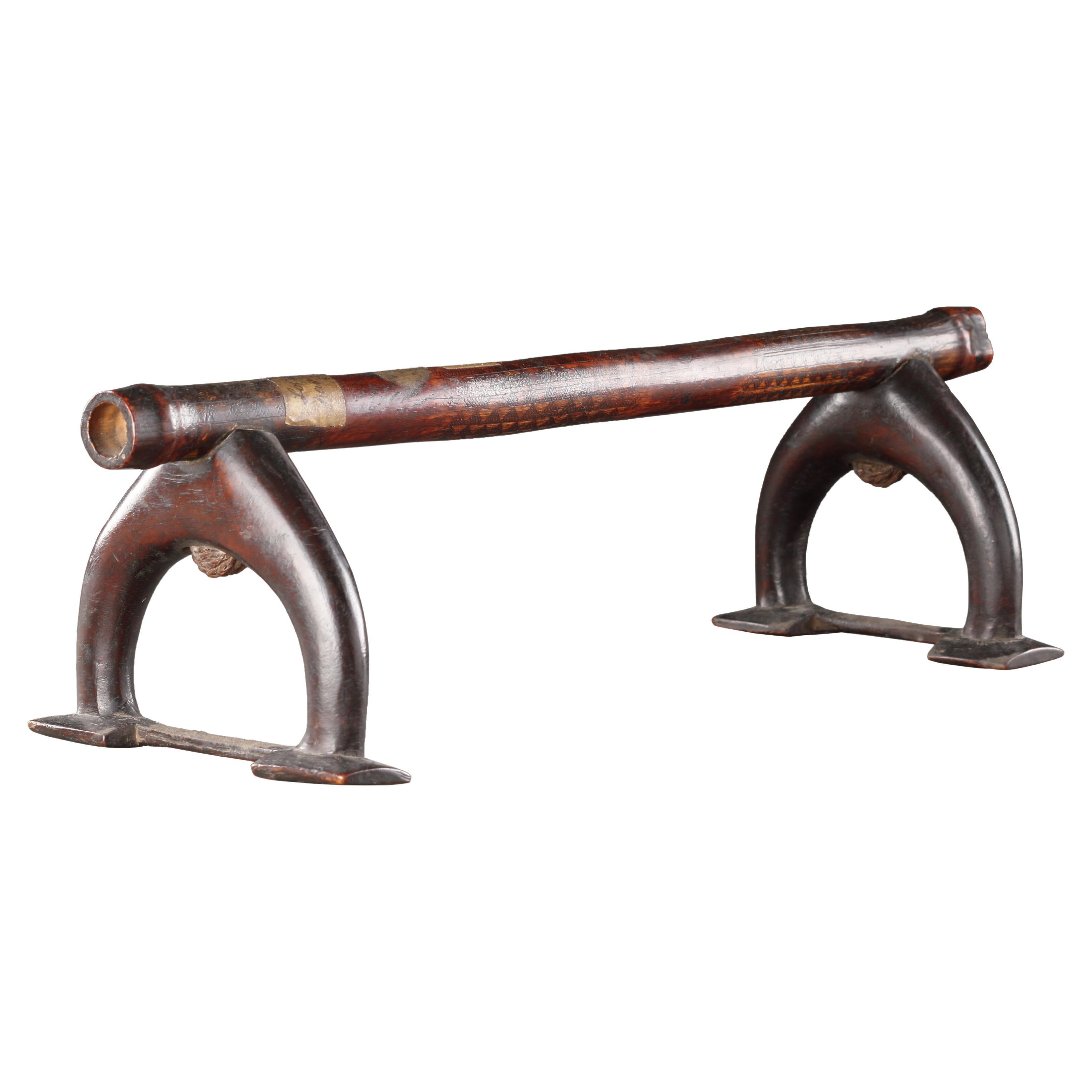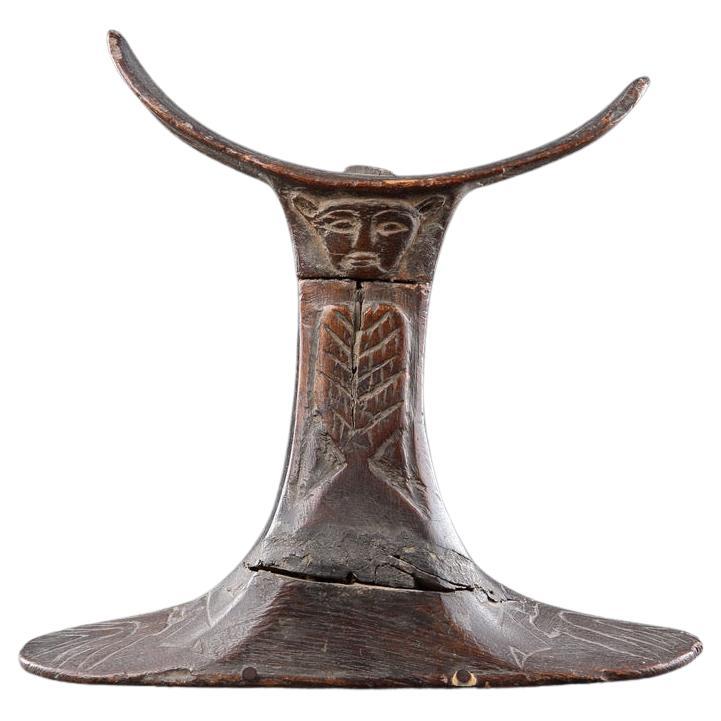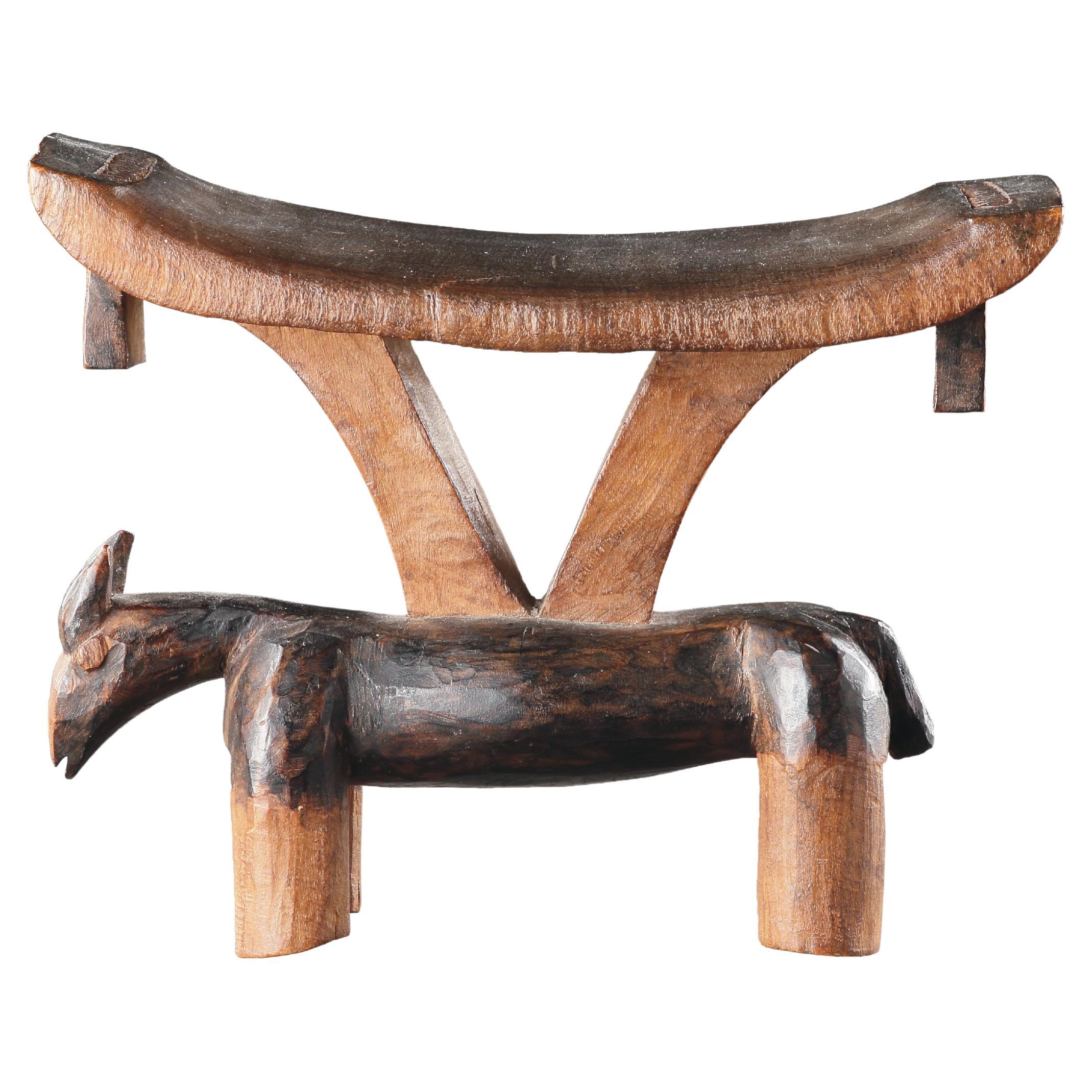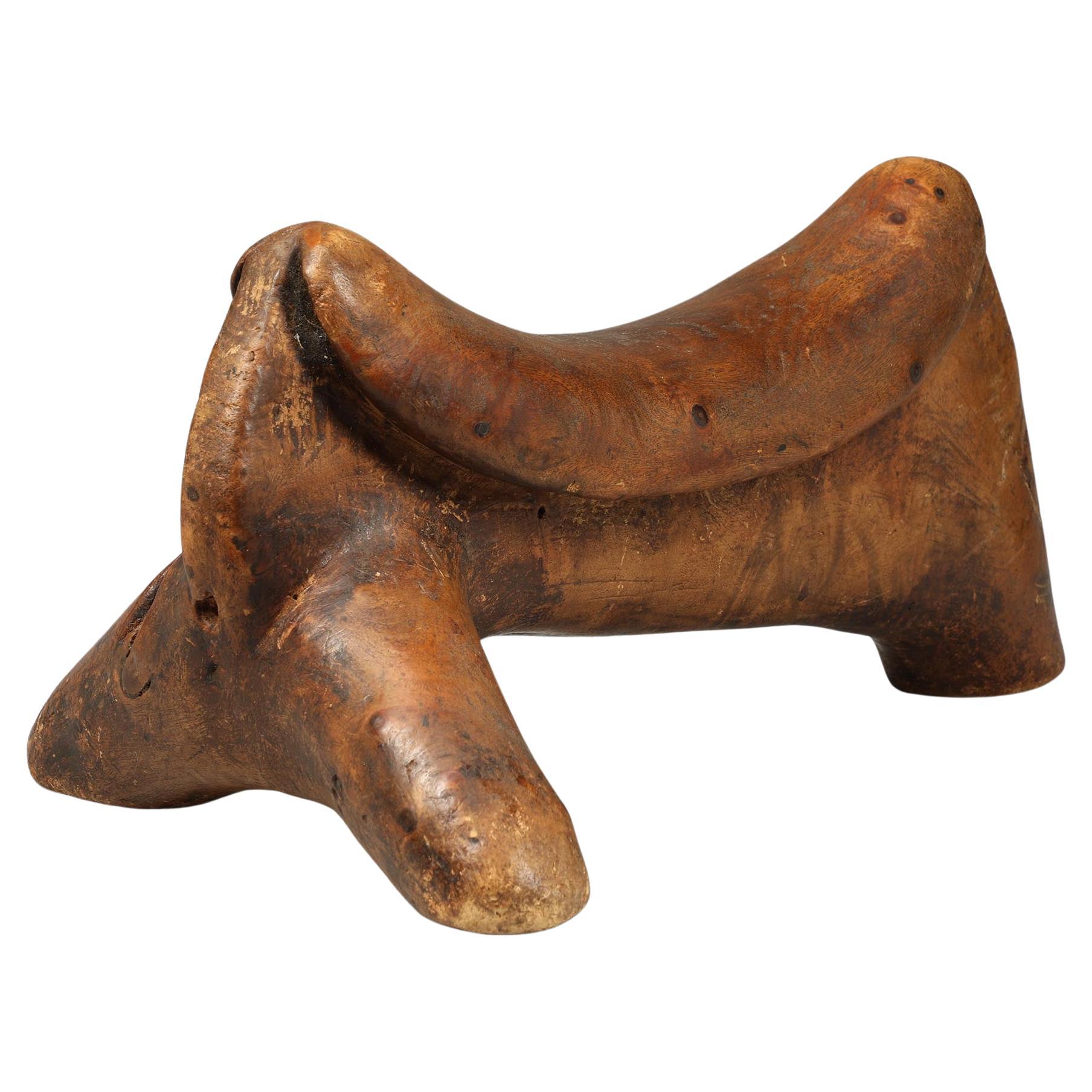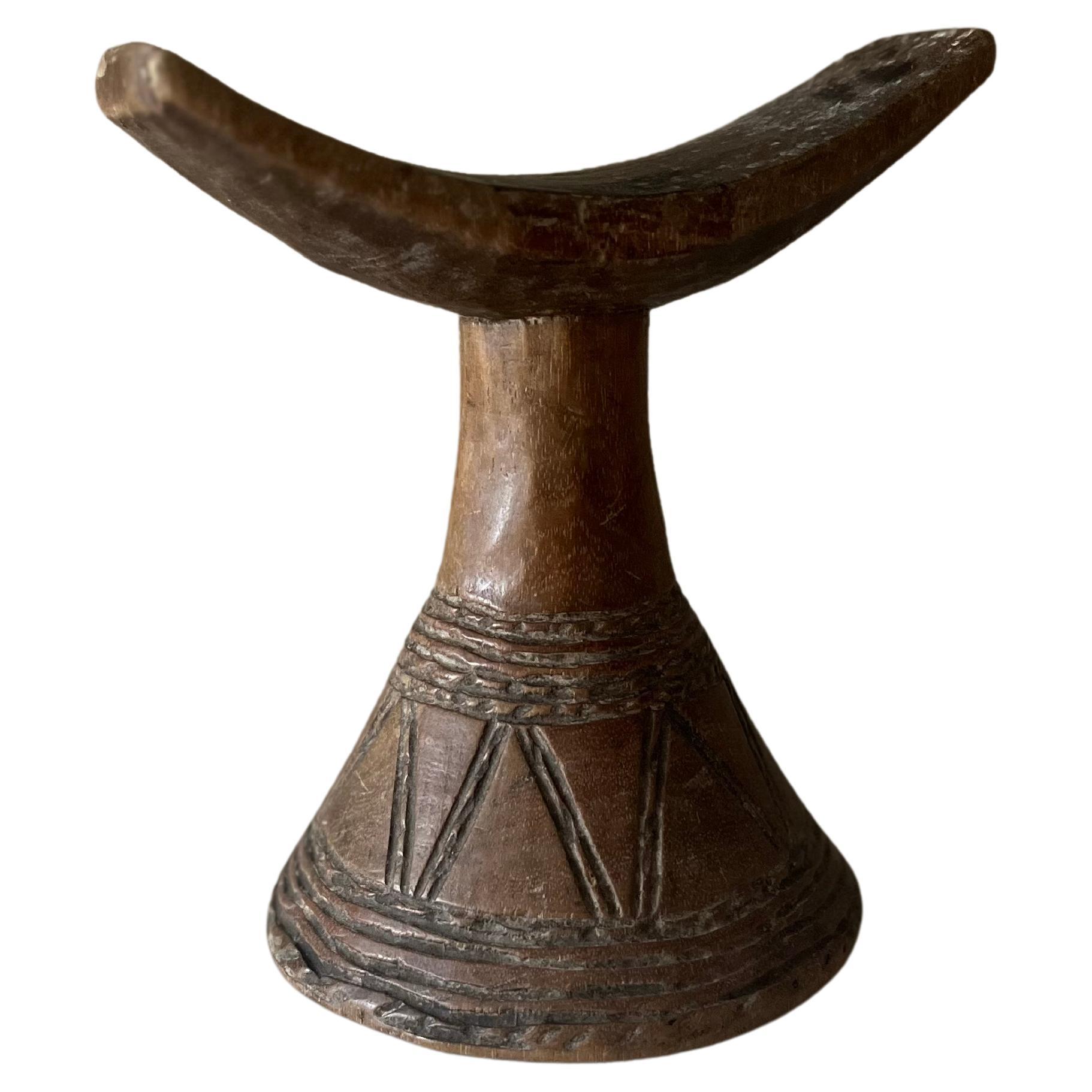Items Similar to A Rare and Exceptional Carved Headrest ‘Kali Hahapo’
Want more images or videos?
Request additional images or videos from the seller
1 of 12
A Rare and Exceptional Carved Headrest ‘Kali Hahapo’
About the Item
A Rare and Exceptional Carved Headrest ‘Kali Hahapo’
Excellent colour and patina
Wood, sennet (coconut fibre), glass beads
Tonga
Late 18th / Early 19th Century
SIZE: 19cm high, 53cm long - 7½ ins high, 20¾ ins long
PROVENANCE:
Ex Captain A.W.F. Fuller (1882 - 1961) given to Dr Roland Force, in recognition of Force’s work in cataloguing the Fuller collection (see: below)
Ex Julian Harding collection
Ex Wayne Heathcote
Ex Patricia Withers collection (1934 - 1998) London
Ex Sotheby’s London 1988
Ex Nasser Gallery 2010
Ex Private collection
See:
‘The Mark and Carolyn Blackburn Collection’ 2010, pg. 246, ill. 146
‘The Fuller Collection of Pacific Artefacts’, Lund Humphries, London 1971
A comparable example in the Tongan National Museum, Tofoa. Also several neck-rests part of the collections in the National Museum of Australia, Canberra (inv. Oz 347 and inv. Oz 348)
CF:
Pierre Loos, Bayet et Caltaux, ‘La tête dans les étoiles. Appuis-Nuque d’Afrique et d’ailleurs’, BRUNEAF, 2012: pg. 157
Exhibited:
BRUNEAF, Bruxelles, Belgium ‘La tête dans les étoiles’. ‘Appuis-nuque d'Afrique et d’ailleurs’, 6 - 10 June 2012
Of elegant arching form and carved in one piece from a dense, fine grained wood, possibly ‘Intsia bijuga’. Neck-rests of this type were used in Tonga as pillows to ensure that the elaborate coiffure of the owner would not be disturbed during sleep. ‘Kali’ acquired ‘mana’ (the spiritual force) by repeated contact with the owner’s head and in the case of a chief became objects of great prestige.
This example, from the renowned Captain Fuller collection, is exceptional for the elegance and purity of its form, especially evident in the strongly curved legs ending in subtle horizontal flange feet. To each end of the ‘cross-bar’ glass beads have been inserted to enhance the decorative appeal and importance of this piece.
In the opinion of George Ortiz no civilisation has equalled the Pacific Islanders’ superb furniture and domestic objects. Writing of Tongan neck-rests the great connoisseur of Polynesian Art Edward Dodd said: ‘What wonderful springing forms!’
For a comparable neck-rest (no. 689) in the James Hooper collection. Of classic Tongan form, it was however collected at Mbau, Fiji, in 1865. Compare also two ‘kali’ previously in the Fuller collection ( nos. 274498 and 274499) and now in the Field Museum, Chicago.
- Dimensions:Height: 7.5 in (19.05 cm)Width: 20.75 in (52.71 cm)Depth: 7.5 in (19.05 cm)
- Materials and Techniques:
- Place of Origin:
- Period:
- Date of Manufacture:Late 18th / Early 19th Century
- Condition:Wear consistent with age and use. Excellent colour and patina.
- Seller Location:London, GB
- Reference Number:1stDibs: LU9363236849412
About the Seller
New to 1stDibs
Joined in the past six months.
No Reviews Yet
Vetted Seller
These experienced sellers undergo a comprehensive evaluation by our team of in-house experts.
Established in 1989
1stDibs seller since 2023
- ShippingRetrieving quote...Ships From: London, United Kingdom
- Return PolicyA return for this item may be initiated within 14 days of delivery.
More From This SellerView All
- A Very Fine and Rare Headrest ‘Kali’ or ‘Kalimasi’ / ‘Kali Toloni’Located in London, GBA Very Fine and Rare Headrest ‘Kali’ or ‘Kalimasi’ / ‘Kali Toloni’ Bamboo, wood, coconut ‘sennet’ fibre The ‘cross-bar’ (rest) engraved with triangular design reminiscent of ‘Tapa C...Category
Antique Early 19th Century Tongan Tribal Art
MaterialsBamboo, Natural Fiber, Wood, Coconut
- A Rare and Finely Carved Egyptian Wooden HeadrestLocated in London, GBA Rare and Finely Carved Egyptian Wooden Headrest with a Carved Head to both Sides Representing the God ‘Bes’ (Protector of the Homestead) above Carved...Category
Antique 15th Century and Earlier Egyptian Tribal Art
MaterialsWood
- A Rare Anthropomorphic Tsonga HeadrestLocated in London, GBA Rare Anthropomorphic Tsonga Headrest An old paper label: ‘African Pillow Bt. Webster. Sep 1897. P.’ Fine colour and patina through use Wood, pigment, paper label Zimbabwe 19th...Category
Antique 19th Century Zimbabwean Tribal Art
MaterialsWood, Paper
- An Unusually Large and Fine Tsonga ‘Antelope’ HeadrestLocated in London, GBAn Unusually Large and Fine Tsonga ‘Antelope’ Headrest Wood, pigment, glass beads Zimbabwe 19th Century SIZE: 20cm high, 32cm wide - 8 ins high, 12½ ins wide PROVENANCE: Ex Pri...Category
Antique 19th Century Zimbabwean Tribal Art
MaterialsGlass, Wood
- An Exceptional Eastern Cape Nguni Pipe Bowl and StemLocated in London, GBAn Exceptional Eastern Cape Nguni Pipe Bowl and Stem Wood, metal Old inscription and dated: ‘1892’ South Africa 19th Century Size: 45.5cm long - 18 ins long Published: ‘The ...Category
Antique 19th Century South African Tribal Art
MaterialsWood
- A Rare and Historically Important Artefact Recovered from HMS Adventure in 1775Located in London, GBA Rare and Historically Important Artefact Recovered from HMS Adventure in 1775 after Captain James Cook’s Second Voyage to the Pacific A ‘coconut husker’ made by a ship’s carpenter aboard HMS Adventure in the style and design of a Native Islander’s ethnographical ‘coconut husker’ An engraved and inscribed copper plaque: A memento from The Sandwich Islands Coconut Husker used aboard HMS Adventure and recovered from The Royal Dockyard Deptford 1775 Oak, iron, brass, copper, handmade iron screws Fine rich colour and patina England / Sandwich Island 18th Century SIZE: 15.5cm high, 49.5cm long, 20cm wide (max) - 6¹⁄₈ ins high, 19½ ins long, 7⁷⁄₈ ins wide (max) Provenance: Found in a Scottish attic after centuries of lying hidden in a crate Ex Private Scottish collection Captain James Cook’s second voyage aboard the Resolution and accompanied by HMS Adventure set sail in July 1772. The discovery of the southern eight islands of the Sandwich Islands group was in 1775. The given name was chosen in honour of John Montagu, 4th Earl of Sandwich, First Lord of the Admiralty. The copper plaque and inscription however should not be read as The Sandwich Islands ‘Owhyhee’ (The Hawaiian Islands) which were later discovered on January 18th, 1778, on Captain Cook’s third voyage. Rather the inscription refers to ‘South Sandwich Islands’ lying to the south east of South Georgia and only renamed later with the word ‘South’ to distinguish them from the ‘Sandwich Islands’ now known as the Hawaiian Islands. Not withstanding during Cook’s second voyage he visited Easter Island, Tahiti, Society Islands, Niue, Tonga, New Hebrides, New Caledonia, Norfolk Islands, Palmerston Island and South Georgia. The crew onboard having been exposed to various types of ‘coconut huskers’ adapted those designs into the example we now see, having been rescued from HMS Adventure in 1775. A rare example of 18th century cross...Category
Antique 16th Century American Tribal Art
MaterialsBrass, Copper, Iron
You May Also Like
- Dinka stylized animal form carved wood headrest, East AfricaLocated in Point Richmond, CADinka stylized animal form carved wood headrest, East Africa. On three "legs" with curved top. Deep patina from handling and use. 12 1/2 inches long, Created mid 20th century or e...Category
Mid-20th Century Nigerian Tribal Tribal Art
MaterialsWood
- Wooden Ethiopian HeadrestLocated in Chicago, ILSo as not to muss their intricate hairstyles, tribal leaders would rest their heads on these petite wooden stands. The combination of conic base and concave rest gives these function...Category
Mid-20th Century Ethiopian Tribal Abstract Sculptures
MaterialsWood
- Ashanti tribal headrestLocated in London, GBA good example of an African Ashanti tribal headrest. Ghana. Early to mid-twentieth century.Category
Mid-20th Century Ghanaian Tribal Tribal Art
MaterialsWood
- Early 20th Century East African Carved Headrest, Ethiopia (Kambatta People)Located in Ottawa, OntarioShowing a crescent shaped headrest braced by flattened 'V' shaped supports rising from a cupped base, decorated overall with hand carved linear motifs and exhibiting an old rubbed su...Category
Early 20th Century Ethiopian Tribal Tribal Art
MaterialsWood
- Small Ashanti tribal headrest stoolBy Akan AshantiLocated in London, GBA wonderful small early 20th century Ashanti tribal stool, headrest. Carved from a single piece of wood. Well worn and genuine tribal stool or headrest.Category
Vintage 1920s Ghanaian Tribal Tribal Art
MaterialsWood
- Early Twentieth-Century South African HeadrestLocated in London, GBThis fine early twentieth-century headrest, from the Zulu culture in South Africa, was previously part of a selection of exceptional Southern African art in the Terence and Bernice P...Category
Early 20th Century South African Tribal Tribal Art
MaterialsHardwood
